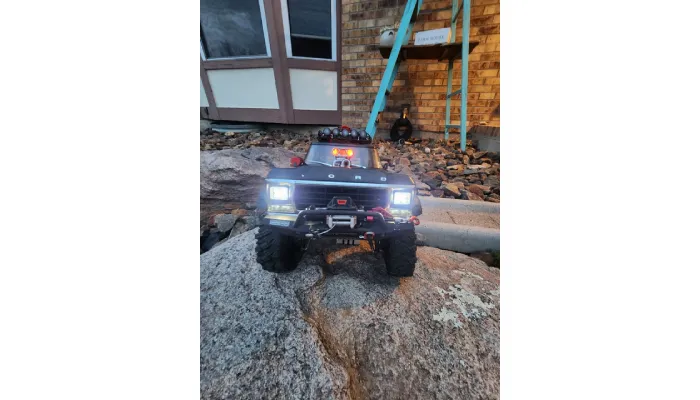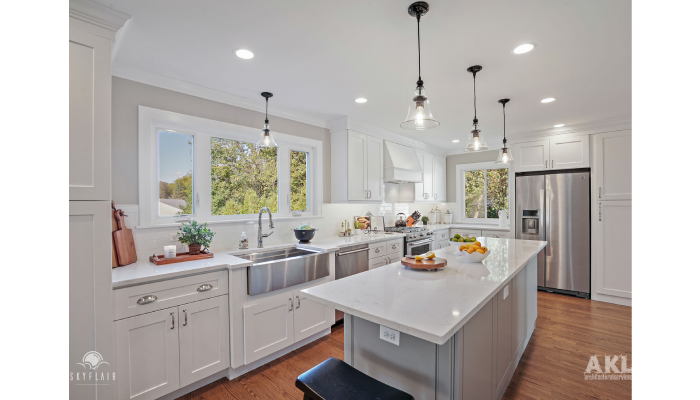Upgrading your car with LED lights is a practical way to enhance visibility and style without too much hassle. First, you’ll want to understand the benefits they offer—brighter light output and a modern look compared to old halogen bulbs. Choosing the right type, like Blob or CSP LEDs, is key; CSP is usually better for replicating halogen light patterns. Once you’ve got your bulbs, prepare for installation by gathering tools and removing outdated fixtures carefully. After inserting the new LEDs, adjust the beam patterns so they illuminate just right without blinding other drivers. Finally, test them out at night for safety!
1. Understanding the Benefits of LED Lights
Upgrading to LED lights for your car comes with several advantages. First off, LEDs consume significantly less energy than traditional halogen bulbs, which can lead to lower fuel costs over time. This energy efficiency is a great way to save money in the long run. Additionally, LED lights have an impressive lifespan, often lasting up to 25,000 hours. This means fewer replacements and less hassle for you.
Another benefit is that LED lights produce less heat, reducing the risk of damaging surrounding components in your vehicle. When you turn them on, they provide instant illumination, improving visibility immediately compared to the slower warm-up time of halogen bulbs. This can be particularly helpful during unexpected night driving or when visibility is poor.
Moreover, LEDs are more durable and resistant to shock and vibration, making them ideal for automotive use. They can withstand rough conditions better than traditional bulbs, which means they’re less likely to fail when you need them most. Available in various colors and temperatures, LED lights allow for a level of customization that can enhance your vehicle’s aesthetic appeal.
In challenging weather conditions like rain or fog, LED lights can provide better visibility, enhancing overall safety on the road. Plus, many LED options are designed to be more environmentally friendly, reducing waste compared to regular bulbs.
2. Choosing the Right LED Bulbs
When upgrading your car with LED lights, selecting the right bulbs is crucial for optimal performance. Start by checking the wattage; most LED replacements consume less power than traditional halogen bulbs. This not only helps in reducing energy usage but also minimizes strain on your vehicle’s electrical system. Next, consider the color temperature of the bulbs. Options range from warm white (around 3000K) to cool white (up to 6000K). A cooler light typically provides a more modern look and can enhance visibility, especially at night.
It’s also important to look for bulbs marked as CANbus compatible. Many newer vehicles have sophisticated monitoring systems that can throw error messages if the wrong type of bulbs is used. To ensure you get the brightness you need, research the lumen output of the bulbs you’re considering. Higher lumens mean brighter light, which can improve your driving experience.
In addition to brightness, beam pattern specifications matter. Verify that the LED bulbs you choose match your vehicle’s requirements for optimal road illumination. You can also decide whether you prefer plug-and-play options, which are easier to install, or bulbs that may require additional installation steps. Some LED bulbs come with adjustable bases that allow for better alignment, which is a handy feature to check for.
Reading reviews and ratings from other users can guide you toward bulbs with a proven track record for performance and longevity. Don’t forget to compare warranties offered by different manufacturers, as this can provide additional peace of mind. Lastly, ensure that the bulbs meet DOT (Department of Transportation) standards, confirming they are legal for road use.
3. Installation Process for LED Lights
Before you start installing your new LED lights, safety should be your top priority. Begin by disconnecting the battery to avoid any electrical mishaps. Refer to your vehicle’s manual for specific instructions on removing the headlight assembly, as this can vary between models. When handling the new LED bulbs, it’s wise to wear gloves. This prevents oils from your skin from affecting their lifespan.
Once you’ve removed the old bulbs, carefully insert the new LED bulbs into the existing sockets. Ensure they fit snugly; if they don’t, check for any obstructions in the socket area that might need clearing. If your LED bulb comes with a fan or heatsink, confirm there’s enough space within the assembly for proper ventilation. After securing the bulbs, connect any wiring harnesses firmly to avoid them coming loose while driving.
Before you power on the new bulbs, it’s a good idea to use a multimeter to test all connections for proper functionality. If you find that the LED bulbs don’t align perfectly with the headlight housing, you may need to adjust the housing to accommodate the new design. Always follow the manufacturer’s instructions closely for any specific installation tips. After a few weeks, revisit your installation to ensure everything remains secure and functioning as intended.
4. Adjusting Beam Patterns After Installation
After you’ve installed your new LED lights, it’s crucial to adjust the beam patterns to ensure optimal visibility and safety. Start by parking your vehicle on a level surface about 25 feet away from a wall or garage door. This distance gives you a clear view of how the beams are hitting the surface. It’s important to have your vehicle unloaded to avoid misalignment caused by extra weight.
Next, mark the center of the wall where the light beams hit. This serves as a reference point during your adjustments. Begin by adjusting the vertical aim; the center of your beam should ideally be just below the height of the headlights. After that, focus on the horizontal aim. You want the light spread to illuminate the road effectively without blinding oncoming traffic.
Use a screwdriver or the appropriate tool to make the adjustments according to your vehicle’s manual. Once adjusted, check that both low and high beams do not create glare for other drivers. It’s a good idea to test your lights at night to ensure they light up the road adequately and identify any dark spots.
After a few days of driving, recheck the adjustments. Sometimes, the beams can shift slightly, and you might need to tweak them again. If you’re uncertain about aligning the beams yourself, don’t hesitate to seek professional help to ensure everything is set correctly.
5. Testing Your Upgraded LED Lights
After you’ve installed your new LED lights, it’s crucial to ensure they’re functioning properly. Start by turning on the headlights and visually inspecting for any flickering or dim lights. Both low and high beams should illuminate correctly. A night drive is an excellent way to gauge visibility improvements over your previous bulbs. Pay attention to how well the lights illuminate road signs and other vehicles; this will give you a good sense of the upgrade’s effectiveness.
Next, ensure the lights remain cool to the touch after extended use, as overheating can indicate a problem. After installation, check the headlight assemblies for condensation, which may suggest a seal issue. Test the brightness under various weather conditions to evaluate performance, especially in rain or fog, as LED lights can behave differently in adverse conditions.
Also, observe the spread of light. You should see a clear cutoff line without excessive glare that could blind oncoming traffic. Gather feedback from passengers about visibility during your night drives, as their perspective can be quite valuable. If you encounter any issues, revisit the installation process, focusing on connections and alignment to make necessary adjustments.
6. Maintenance Tips for Longevity
To keep your LED lights shining bright for years to come, regular maintenance is key. Start by wiping the lenses with a microfiber cloth to prevent scratches and keep them clear. It’s also wise to inspect the wiring connections periodically; look for any signs of wear or corrosion that could affect performance. Be cautious with cleaning products—avoid harsh chemicals on the headlight assembly to maintain clarity and avoid damage.
Pay attention to any moisture inside the housing; if you spot any, address leaks promptly to prevent further issues. Applying a UV protection film can help shield the lenses from sun damage, extending their lifespan. Make it a habit to replace any burnt-out bulbs as soon as possible to maintain balanced lighting.
Storing your vehicle in a garage or shaded area can significantly prolong the lifespan of your lights. Keep an eye out for flickering, as this may indicate a failing bulb or wiring issue that needs to be addressed. Regular vehicle maintenance checks should include the lighting system to catch potential problems early. Lastly, keep spare bulbs handy for quick replacements when needed, ensuring you’re always ready to hit the road safely.
7. Legal Considerations for LED Upgrades
Before upgrading your car with LED lights, it’s essential to understand the legal landscape surrounding headlight modifications. Start by researching your local laws, as they can vary widely. Some states impose specific restrictions on the color and brightness of lights, which means that what works in one area may not be compliant in another. Furthermore, be aware that certain vehicles may require inspections for any modified lighting systems to ensure they meet safety standards.
Using unapproved LED lights can lead to fines, so it’s vital to choose options that are compliant. Proper aiming of your upgraded lights is also crucial; improperly aimed headlights can blind other drivers, resulting in potential penalties. Additionally, check with your insurance provider about how these modifications may affect your coverage. Non-compliance could pose risks in the event of an accident.
Consulting local automotive shops can provide valuable insights into legal LED options tailored for your vehicle. Stay informed about local regulations, as they can change over time. Keeping documentation of the product specifications and installation might be beneficial for any legal inquiries that arise later. Engaging with local car enthusiasts can also help you gather knowledge about best practices and legal considerations in your area.
8. Purchase Recommendations for LED Bulbs
When shopping for LED bulbs, it’s wise to prioritize quality and reliability. Look for products backed by a solid warranty, typically ranging from one to three years, which indicates the manufacturer’s confidence in their product. Before making a purchase, check customer reviews and ratings on popular retail websites; this can give you a clearer picture of the bulb’s performance and longevity. Comparing prices across different platforms, both online and in-store, can help you snag the best deal. It’s also advisable to buy from authorized dealers to ensure the authenticity of the products.
If you’re planning to upgrade multiple lights, consider purchasing bundles that offer multiple bulbs at a discounted price. Engaging with trusted automotive forums or communities can yield valuable recommendations based on fellow enthusiasts’ experiences. Always verify the return policy as well, in case the bulbs don’t meet your expectations after installation. Ensure that the bulbs explicitly state compatibility with your vehicle model, as this will save you time and hassle.
Opt for energy-efficient models that provide high lumen output while consuming low wattage. This not only enhances your visibility on the road but also reduces strain on your vehicle’s electrical system. If you prefer hands-on advice, local automotive stores can be a great resource, allowing you to ask questions and make an immediate purchase.
9. Community Insights on LED Lighting
Joining online forums can be a great way to share experiences and gather tips from other car enthusiasts. Platforms like Reddit often have threads dedicated to LED lighting where users share their successes and challenges. Following automotive influencers on social media is another useful approach; they frequently post real-time reviews and recommendations about different LED products. If you’re looking for hands-on inspiration, attending local car meetups can be invaluable. You can see various LED setups in person and talk to the owners about their choices. Engaging in discussions about the pros and cons of various brands and types of LED lights can help you make an informed decision. Don’t hesitate to ask questions in community groups to get personalized advice tailored to your vehicle. You can also participate in local car clubs focused on modifications and upgrades, which can provide a wealth of knowledge and support. Plus, sharing your own experiences and modifications not only contributes to the community but may also help fellow car owners in their journeys. Lastly, keeping an eye out for DIY videos on YouTube can offer step-by-step guidance for those who prefer a hands-on approach to upgrades.
Resource URL:
https://evandesigns.com/collections/hobby-leds
https://en.wikipedia.org/wiki/Automotive_lighting

Mary Burns is a dedicated writer focusing on health and fitness topics. With a passion for promoting wellness and vitality, Mary shares her knowledge and expertise through engaging and informative blog posts.




